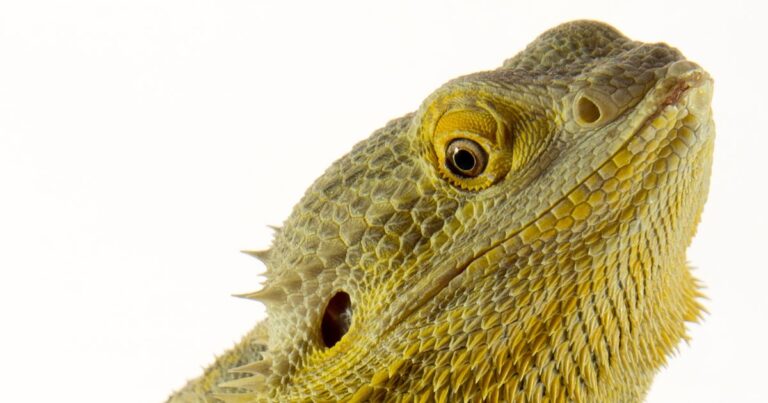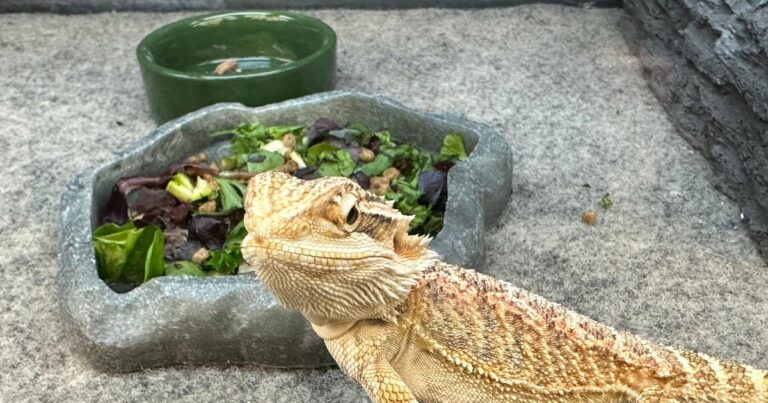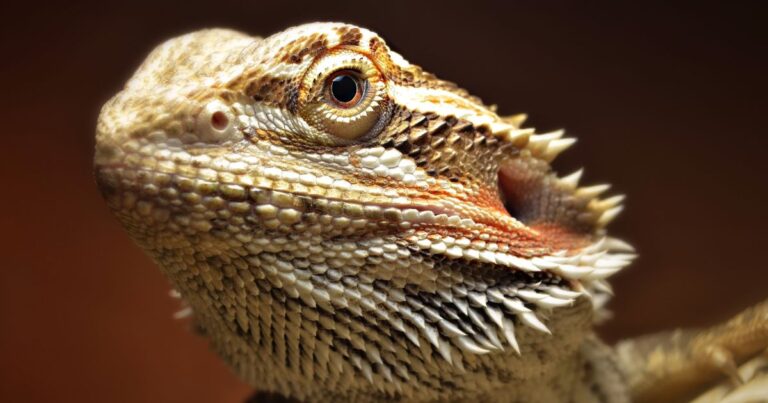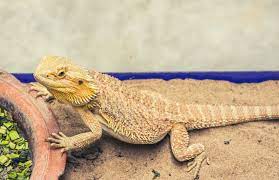Decoding Bearded Dragon Body Language
Table of Contents
Decoding Bearded Dragon Body Language: A Comprehensive Guide
Hey there, fellow bearded dragon enthusiasts! It’s Emily here, back with another exciting post about our scaly friends. Today, we’re going to dive into the fascinating world of Bearded Dragon Body Language in our Behavior and Training section.
Understanding Bearded Dragon Body Language
If you’ve ever watched your bearded dragon and wondered what they’re trying to tell you, you’re not alone. Bearded dragons have a unique way of communicating, and understanding their signals can help you build a stronger bond with your pet. It’s like learning a new language, but instead of words, it’s all about movements and colors. It’s a fascinating journey that brings you closer to your bearded dragon and allows you to understand their needs and emotions better. It’s not always easy, but it’s definitely worth it.
The more you observe your bearded dragon, the more you’ll start to notice patterns in their behavior. You’ll begin to understand what makes them happy, what annoys them, and when they’re feeling under the weather. This understanding is crucial in providing the best care for your bearded dragon and ensuring they live a happy and healthy life.
So, let’s dive into the world of bearded dragon body language. It’s a world full of subtle signals and dramatic displays, and it’s one of the things that makes owning a bearded dragon so special.
The Basics of Bearded Dragon Communication
Bearded dragons communicate using a combination of body postures, movements, and even colors. They can’t speak or make many sounds, so they rely on these physical signals to express themselves. It’s a silent language, but it’s incredibly expressive. Once you start to understand it, you’ll be amazed at how much your bearded dragon has to say.
Each movement or posture has a specific meaning in the world of bearded dragons. A raised tail, a puffed-up beard, a slow wave of the arm – each of these actions is a word in the bearded dragon’s vocabulary. And just like with human language, context is important. The same action can mean different things depending on what’s happening around the bearded dragon.
Understanding this language requires patience and observation. But don’t worry – you don’t need to be a reptile expert to understand your bearded dragon. All you need is a keen eye, an open mind, and a willingness to learn.
Photo by Adam Mills on Unsplash
Common Bearded Dragon Postures and Gestures
Let’s dive into some of the most common postures and gestures you might see from your bearded dragon, and what they mean.
Arm Waving
One of the most adorable behaviors bearded dragons exhibit is arm waving. They’ll stand on three legs and slowly wave one of their front legs in a circular motion. This is generally a submissive gesture, often used to show they recognize another bearded dragon’s dominance. It’s like a little salute, a sign of respect from one dragon to another.
Head Bobbing
Head bobbing is another common behavior. The dragon will rapidly bob their head up and down. This is typically a sign of dominance, often seen in males trying to impress females or assert their territory. It’s a powerful display, a clear message that the bearded dragon is in charge.
Beard Flaring
Bearded dragons get their name from the ability to puff out the skin under their throats, known as their “beard”. When they flare their beard, it can be a sign of stress, aggression, or a mating display. It’s a dramatic gesture, one that’s hard to ignore.
Color Changes
Bearded dragons can also change their color to communicate. A darkened beard can be a sign of stress or aggression, while bright colors can indicate excitement or good health. It’s like a mood ring, but much more complex and fascinating.
Interpreting Bearded Dragon Actions
Understanding your bearded dragon’s actions can help you respond appropriately and provide the best care possible. Here are some common actions and what they might mean.
Digging: Bearded dragons love to dig. They might dig to explore, to try to escape, or to find a comfortable spot. Female bearded dragons also dig when they’re ready to lay eggs. It’s a natural behavior, one that can be fascinating to watch. Just make sure your bearded dragon has a safe and suitable substrate for their digging adventures.
Basking: Basking is a crucial part of a bearded dragon’s day. They’ll find a warm spot under their heat lamp and stretch out to absorb the heat. This helps them digest their food and maintain their body temperature. It’s a moment of relaxation and comfort, a time when your bearded dragon can just sit back and enjoy the warmth.
Remember, these actions are not just behaviors – they’re communication. Your bearded dragon is telling you about their needs, their feelings, and their well-being. By understanding these actions, you can ensure your bearded dragon is happy, healthy, and comfortable.
Bearded Dragon Body Language Meanings
Understanding the meanings behind your bearded dragon’s body language can help you provide better care and build a stronger bond. Always pay attention to their behavior and try to respond to their needs.
A bearded dragon that’s frequently arm waving might be feeling stressed or threatened. A bearded dragon that’s constantly digging might need a change in their environment. A bearded dragon that’s basking for long periods might be trying to tell you they’re not feeling well.
These are just examples, of course. Each bearded dragon is unique, with their own personality and communication style. But by paying attention to their body language, you can learn to understand your bearded dragon’s unique way of expressing themselves.
Remember, owning a bearded dragon is not just about providing food and a warm spot to bask. It’s about understanding, communication, and mutual respect. It’s about building a bond that’s based on trust and understanding. And that’s what makes it so rewarding.
Photo by Jesse Cortez on Unsplash
Bearded Dragon Interaction
Interacting with your bearded dragon is a great way to build a bond and understand their body language better. Always handle your bearded dragon gently and respect their signals. If they seem stressed or uncomfortable, give them some space. It’s all about trust and respect. When you handle your bearded dragon, you’re entering their world, and it’s important to do so with care and consideration.
Interaction isn’t just about handling, though. It’s also about observing, understanding, and responding to your bearded dragon’s needs. It’s about creating an environment where your bearded dragon feels safe and comfortable. It’s about providing the right food, the right temperature, and the right amount of light. It’s about making sure your bearded dragon has everything they need to thrive.
Remember, interaction is a two-way street. Your bearded dragon is also interacting with you, learning about you, and building a bond with you. So, take your time, be patient, and enjoy the process. The bond you’ll build with your bearded dragon is truly special, and it’s worth every moment of care and attention.
Bearded Dragon Mood Signs
Just like us, bearded dragons can have mood swings. Paying attention to their body language can help you understand their mood. A relaxed, basking bearded dragon is likely content, while a dragon with a darkened beard might be stressed or upset. It’s like a window into their feelings, a way to understand what’s going on in their minds.
Understanding your bearded dragon’s mood can help you provide better care. If your bearded dragon is feeling stressed, you might need to adjust their environment, change their diet, or give them some extra attention. If your bearded dragon is content, you know you’re doing a good job and can continue with your current care routine.
Remember, mood signs are just one part of the puzzle. To truly understand your bearded dragon, you need to pay attention to all aspects of their behavior and body language. But by paying attention to their mood, you can gain valuable insights into their well-being and happiness. It’s a crucial part of being a responsible and caring bearded dragon owner.
Conclusion
Understanding your bearded dragon’s body language is a fascinating part of owning these amazing creatures. It can help you provide better care, respond to their needs, and build a stronger bond. So next time you’re watching your bearded dragon, pay close attention to their body language – you might be surprised at what they’re telling you!
This post is part of my Behavior And Training collection
Take a look at my other post in this series: Are Bearded Dragons Solitary?
Disclaimer: This blog post is based on personal experiences and research. It’s always best to consult with a professional or a vet for any serious concerns about your bearded dragon’s behavior.
I hope you found this post helpful and interesting! If you have any questions or want to share your own experiences with bearded dragon body language, feel free to leave a comment. And remember, every bearded dragon is unique, so what works for one might not work for another. Always be patient and attentive to your bearded dragon’s needs. Until next time, happy dragon keeping!
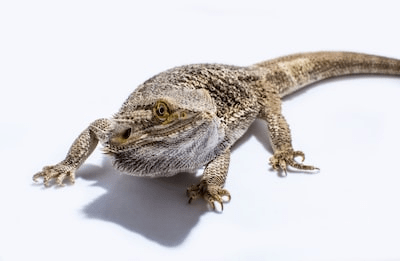
Photo by Gary Ellis on Unsplash
Frequently Asked Questions
What does it mean when a bearded dragon puffs up its beard?
When a bearded dragon puffs up its beard, it’s usually a sign of stress or agitation. They might feel threatened or scared. It’s also a common behavior during mating season, as males will puff up their beards to appear more impressive to females.
Why does my bearded dragon wave its arm?
Arm waving is a common behavior in bearded dragons. It’s often a submissive gesture, signaling to other bearded dragons that they’re not a threat. It can also be a way for them to recognize and communicate with their owners.
My bearded dragon is hiding a lot. Is this normal?
Bearded dragons can hide for a variety of reasons. They might be feeling stressed, scared, or unwell. They also hide when they’re preparing to brumate, which is a period of dormancy similar to hibernation. If your bearded dragon is hiding a lot, it’s important to make sure their environment is comfortable and stress-free. If they continue to hide excessively, it might be a good idea to consult a vet.
What does it mean when a bearded dragon’s belly turns black?
A black or darkened belly is often a sign of stress in bearded dragons. It can be caused by a variety of factors, such as a too-cold environment, illness, or feeling threatened. If your bearded dragon’s belly is consistently black, it’s worth consulting a vet to rule out any health issues.
Why is my bearded dragon opening its mouth wide?
Bearded dragons will often open their mouths wide as a way to regulate their body temperature, as they release heat through their mouths. This behavior, known as gaping, is perfectly normal. However, if your bearded dragon is opening its mouth wide and appears to be struggling to breathe, it could be a sign of a respiratory infection and you should consult a vet immediately.



